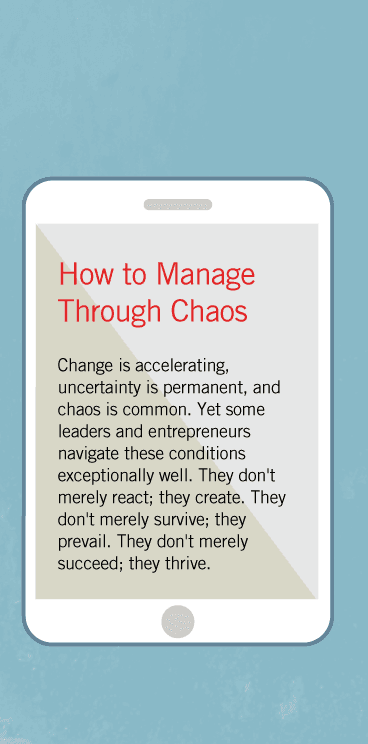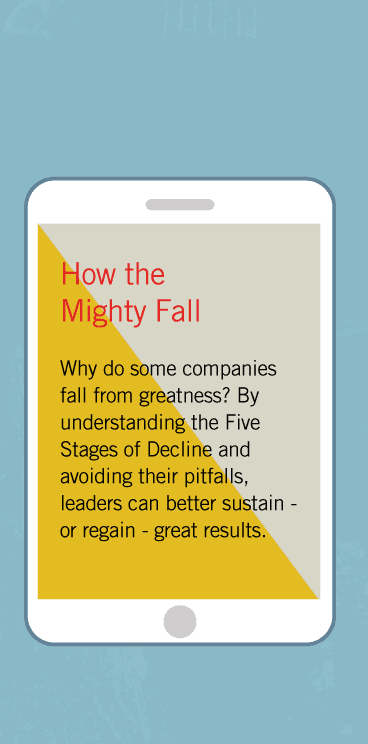The Most Creative Product Ever
Certainly, some great companies—notably Sony, Johnson & Johnson, W.L. Gore, and 3M—have innovation as a core value or an integral part of their strategy. So, you can be innovative and great. But the fact remains: you do not need to have innovative products, services or technologies, or visionary market ideas, to create a great company.
But I decided to do the speech, because while not all great companies have innovative products or services, they all—without exception—pursue the most profound and powerful form of innovation: social innovation. Social innovation—or what I like to call innovation squared—makes most first-order innovation and human productivity possible in the first place. The invention of constitutional government, of private property as a social mechanism, of money, of public stock ownership, of the corporation, of the free-market economy, of public education—those social innovations are ultimately more significant than the invention of the personal computer, the telephone, the automobile, the jet airplane, or the Internet.
Let me use my own experience in the world of rock climbing to illustrate the power of social innovation to drive human progress. In the past thirty years climbing has seen gigantic leaps in accomplishment. Sheer, overhanging rock faces once deemed unscalable now get climbed by 15-year-old kids as “warm-ups.” It took 47 days to climb the south face of El Capitan on the first ascent in 1958; the current record stands at under five hours. While technical innovations, such as sticky shoe rubber, contributed to climbing progress, the primary drivers were in fact social innovations. The decision to include the names of first ascentionists in guidebooks fueled a fierce competition among climbers to push standards and establish new routes. The radical social innovation to work climbs from the “top down” rather than take the conventional approach to work from the “ground up”—essentially reverse-engineering a climb—shattered a social convention and led to a quantum leap in standards. Those and other social innovations, such as international climbing competitions, drove technical innovation, not the other way around.
To take the concept to an organizational level, let me ask you to shift your attention from product and technological innovation to social innovation. Think of it this way: what was Thomas Edison’s greatest invention? Not the light bulb. Not the phonograph. Not the telegraph. I agree with many Edison observers that his greatest invention was the modern research-and-development laboratory—a social invention. What was Henry Ford’s greatest invention? Not the Model T but the first successful large-scale application of a new method of management—the assembly line—to the automobile industry. What was Walt Disney’s greatest creation? Not Disneyland or Mickey Mouse but the Disney creative department, which to this day continues to generate ingenious ways to make people happy.
If you want to build an enduring great company, don’t make the mistake the leaders of Apple Computer made in the late 1980s. After the remarkable success of the Macintosh computer and the departure of Steve Jobs, Apple’s leaders spent their time trying to come up with the next insanely great innovation. Instead, they should have spent their time being social inventors, designing an environment that would be the seedbed for many insanely great innovations over decades to come. They should have been more like the builders of 3M, who never came up with a single product innovation themselves but instead invented a perpetual-innovation machine, fueled by social inventions like “bootleg time” (which gives 3M employees 15% free time to tinker around) and an internal venture-capital fund. Apple failed to become a truly innovative company like 3M because its leadership failed to pay attention to the most important form of innovation, namely, social innovation.
Even if you don’t want to build a perpetual-innovation machine like 3M (and you don’t need to), you still have to be innovative and progressive in management and organization. Great companies are early adopters, if not outright inventors, of progressive management methods. They are among the first to try the outlandish, the different, the radical.
They are like Procter & Gamble, which experimented with employee stock ownership and profit sharing in the late 1800s, 100 years before such practices became common place. They are like Nordstrom, which encouraged salespeople to use their discretion in serving the customer 50 years before the word empowerment showed up in the popular business press. They are like W.L. Gore, which experimented in the 1950s with Abraham Maslow’s self-actualization concepts and a loosely coupled “lattice organization” structure decades before those ideas became widely taught at business schools.
The greatest of all inventions is human organization and society—the ultimate tool for achieving human objectives. Boeing jets, 3M Post-It notes, Federal Express, universal telephone service, the Sony Walkman, the HP 200LX pocket computer—none of those would have been possible without human organization and continual innovation in the practice of management.
So look at the way you spend your time. Are you creating the next great innovation, or are you creating an environment that stimulates innovation? Are you focused on what to do when your current product line becomes obsolete, or are you focused on building a unique culture that cannot be copied? Are you busy inventing gadgets, or are you experimenting with social inventions?
The next wave of enduring great companies will be built not by technical or product visionaries but by social visionaries—those who see their company and how it operates as their ultimate creation and who invent entirely new ways of organizing human effort and creativity.






